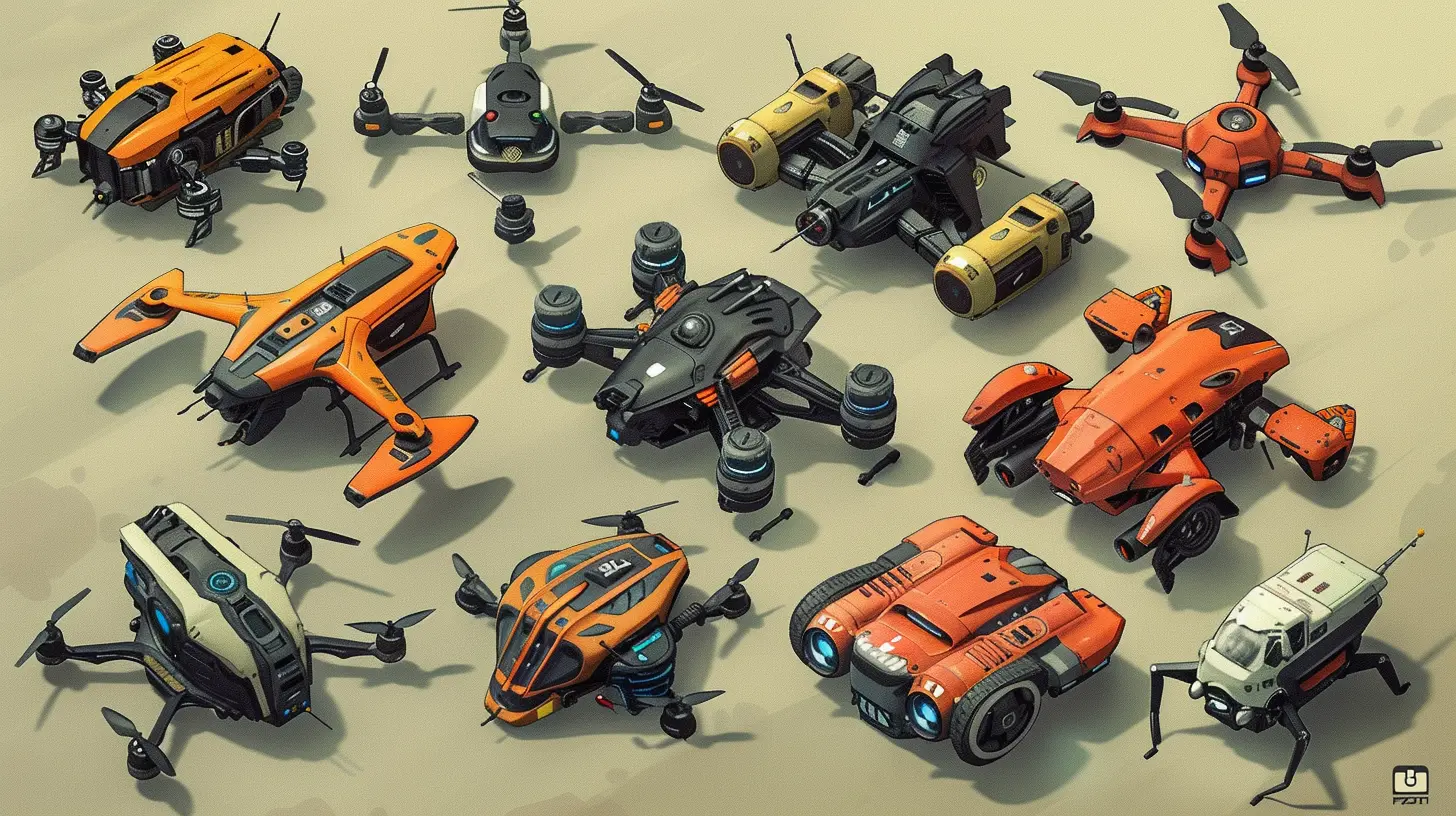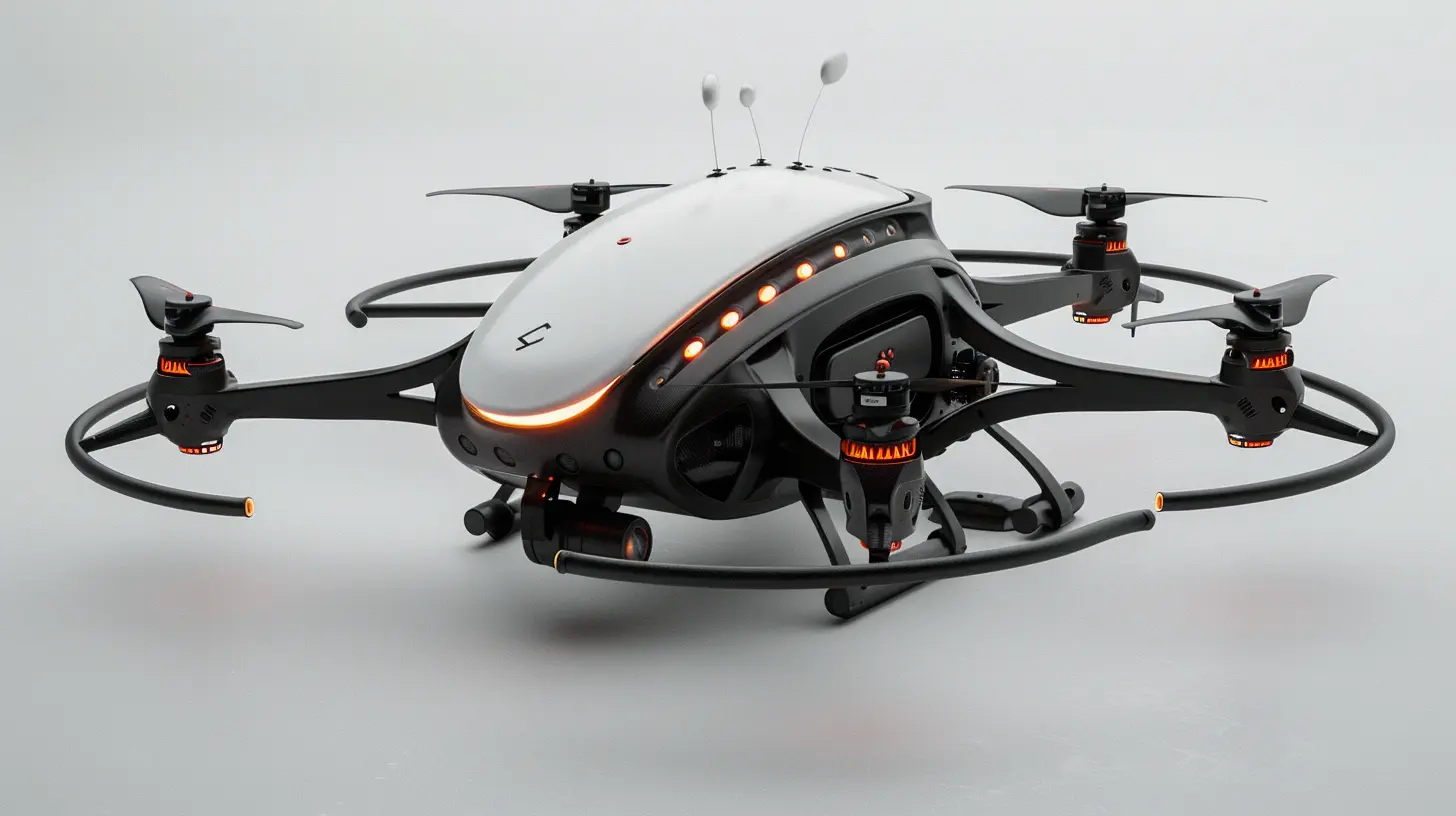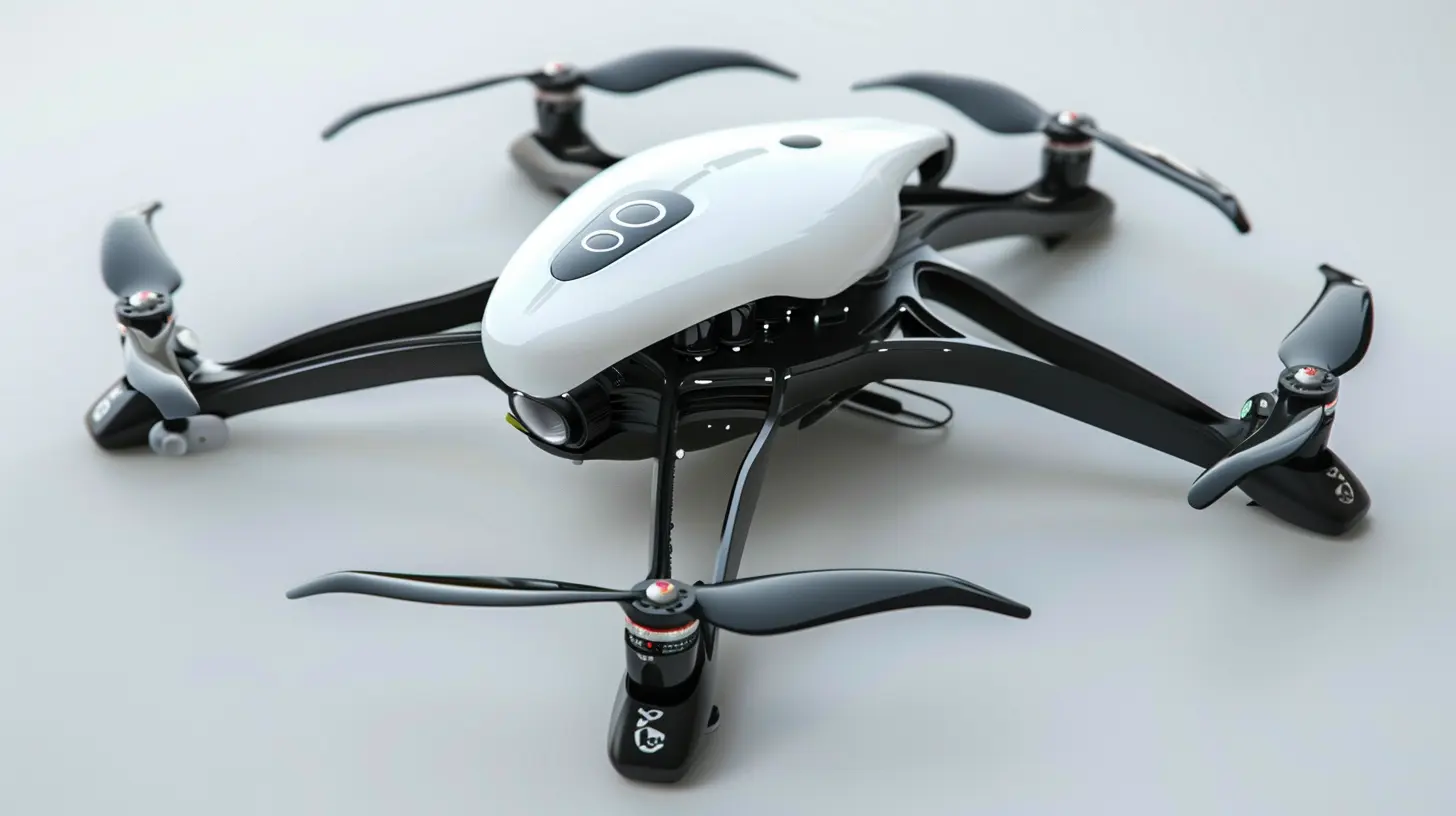The Evolution of Personal Drones: From Toys to Tools
2 August 2025
It’s amazing to think how quickly technology has evolved in just a few short years. One of the most fascinating products of this rapid advancement is personal drones. What started as simple toys for hobbyists has transformed into sophisticated tools that are reshaping industries and changing the way many of us live, work, and even play.
Drones used to be futuristic fantasies, something you'd expect to see in a sci-fi movie, delivering packages or spying from the sky. But today? They’re everywhere. And they’re doing way more than you might expect.
Let’s dive into the evolution of personal drones, from their humble beginnings to their now indispensable role in various sectors.

The Early Days of Drones: Simple Toys in the Sky
If you think back to the early 2000s, drones were mostly seen as toys. They were remote-controlled, noisy, and, to be honest, a bit clunky. These early drones were mostly for hobbyists who wanted to play around with flying machines. They didn’t have cameras, GPS, or any of the cool features you see today.They were fun, sure, but they weren’t exactly practical. You’d see them buzzing around in parks, crashing into trees, or doing loops in the sky. The battery life was often laughably short, and getting them to fly straight was sometimes a challenge in itself. But, these early models laid the groundwork for something much bigger.
The technology behind these early drones was relatively simple. They were, for the most part, modified remote-controlled helicopters that happened to have more propellers. However, tech enthusiasts and engineers saw potential. They realized that with a few upgrades, these flying toys could become something much more significant.

Drones Get Serious: The Rise of Camera Drones
The real game-changer in the personal drone space came when manufacturers began adding cameras to these flying devices. Suddenly, drones weren’t just buzzing toys anymore. They became flying eyes in the sky. This opened up a whole new world of possibilities.Imagine being able to take aerial photos of your house, capture stunning landscapes from above, or shoot a movie-like video of your vacation — all by yourself. That’s exactly what camera drones allowed people to do. Companies like DJI led the charge, creating drones that were not only equipped with high-quality cameras but also had stabilization systems to ensure smooth footage.
Camera drones quickly gained popularity in the photography and videography world. It wasn’t long before professionals were using them to capture shots that were previously only possible with expensive helicopters or cranes.
For the average consumer, drones provided a way to take their photography skills up a notch. From wedding videos to real estate listings, drones offered a fresh perspective—literally.

Advanced Features: GPS, Autopilot, and Beyond
As drone technology improved, so did their capabilities. They were no longer just remote-controlled flying machines. Drones became smarter. GPS systems were integrated, allowing users to map out specific flight paths. Suddenly, you didn’t need to be an expert pilot to fly a drone. You could simply tell it where to go, and it would handle the rest.Autopilot features made it possible for drones to hover in place, circle around a fixed point, or return home with just the click of a button. These advancements made drones more accessible to the average user.
And let’s not forget obstacle avoidance. Early drones had a nasty habit of crashing into things, but modern drones are equipped with sensors that detect and avoid obstacles in real-time. It’s like they have a sixth sense now, knowing exactly when to dodge a tree or move out of the way of a building.
In short, drones were no longer just flying cameras. They became intelligent tools capable of performing complex tasks with minimal human intervention.

Drones as Tools: From Playthings to Professional Equipment
With the addition of advanced features, drones started to move beyond just being fun gadgets for tech enthusiasts. They began making their way into professional industries, proving they could be more than just toys.Drones in Photography and Filmmaking
As mentioned earlier, drones revolutionized the world of photography and filmmaking. Professional filmmakers embraced drones to capture cinematic shots from angles that were previously impossible or way too expensive to achieve.Think of those sweeping aerial shots you see in movies or TV shows. Before drones, you’d need to hire a helicopter, a pilot, a cameraman, and spend thousands of dollars to get that perfect shot. Now? A single drone operator can do it all at a fraction of the cost.
Drones in Agriculture
Believe it or not, drones are making waves in farming too. Farmers are using drones to monitor crops, assess soil health, and even spray pesticides. Traditional methods of crop monitoring often involved driving around large plots of land or walking through fields, which can be time-consuming and inefficient.Drones, on the other hand, can cover vast areas of land in a short amount of time, providing farmers with real-time data that helps them make more informed decisions. They can spot issues like pest infestations or water shortages before they become major problems, saving time and money in the process.
Drones in Construction and Infrastructure
In the construction industry, drones are used for everything from mapping out job sites to monitoring progress. They can create 3D models of buildings and landscapes, giving construction teams a bird’s-eye view of the entire project. This allows for more precise planning and reduces the risk of errors.Similarly, drones are being used in infrastructure inspections. They can fly over bridges, power lines, and even into hard-to-reach places to check for damage or wear and tear. This not only saves time but also keeps workers safe by allowing them to avoid dangerous situations.
Drones in Emergency Services
Another area where drones have become invaluable is in emergency services. Imagine trying to find a missing person in a dense forest. Sending out a team of people could take hours, if not days. But with a drone equipped with thermal imaging, rescuers can locate someone in a fraction of the time.Firefighters are also using drones to assess the severity of fires and direct resources more effectively. In some cases, drones can even deliver medical supplies to hard-to-reach locations, potentially saving lives.
The Future of Personal Drones: What’s Next?
So where do drones go from here? It’s clear that they’ve come a long way from their toy origins, but the future holds even more exciting possibilities.Drone Deliveries
One of the most anticipated advancements in drone technology is the widespread use of drones for deliveries. Companies like Amazon and Google have already started testing drone delivery systems. Imagine ordering something online and having it dropped off at your doorstep in less than 30 minutes by a drone—no delivery driver needed.While there are still regulatory hurdles to overcome, it’s only a matter of time before drone deliveries become a regular part of our lives.
Autonomous Drones
As drones become more intelligent, we’re likely to see more autonomous drones that require little to no human input. These drones could be used for tasks like monitoring traffic, surveying wildlife, or even acting as personal assistants.The idea of swarms of drones working together to complete complex tasks isn’t as far-fetched as it sounds. In fact, researchers are already working on drone swarms that can communicate with each other and work in tandem to achieve goals.
Personal Drones as Everyday Tools
In the not-so-distant future, personal drones could become as common as smartphones. Imagine having a drone that follows you around, recording your daily adventures, helping you navigate busy streets, or even carrying your groceries.As drone technology continues to improve, the line between toys and tools will blur even further. What was once considered a fun hobby could soon become an essential part of our everyday lives.
Conclusion: From Toys to Tools
The evolution of personal drones has been nothing short of remarkable. In just a few short years, they’ve gone from simple flying toys to powerful tools that are changing industries and improving lives. Whether you’re a filmmaker capturing stunning aerial shots, a farmer monitoring your crops, or a first responder saving lives, drones have proven they’re more than just a passing fad.As technology continues to advance, the potential uses for drones will only expand. So the next time you see one buzzing overhead, remember: it’s not just a toy—it’s part of the future.
all images in this post were generated using AI tools
Category:
Tech InnovationsAuthor:

Adeline Taylor
Discussion
rate this article
1 comments
Chantal Baxter
Who knew our childhood toys would evolve into high-flying helpers? From playtime to productivity, personal drones have taken off—literally! Can't wait for the day they bring me my morning coffee, too. Cheers to the future of flying fun!
August 16, 2025 at 11:44 AM

Adeline Taylor
Thank you! It's fascinating how our childhood playthings have transformed into practical tools. The future indeed looks exciting—coffee delivery by drone is just around the corner! Cheers!


